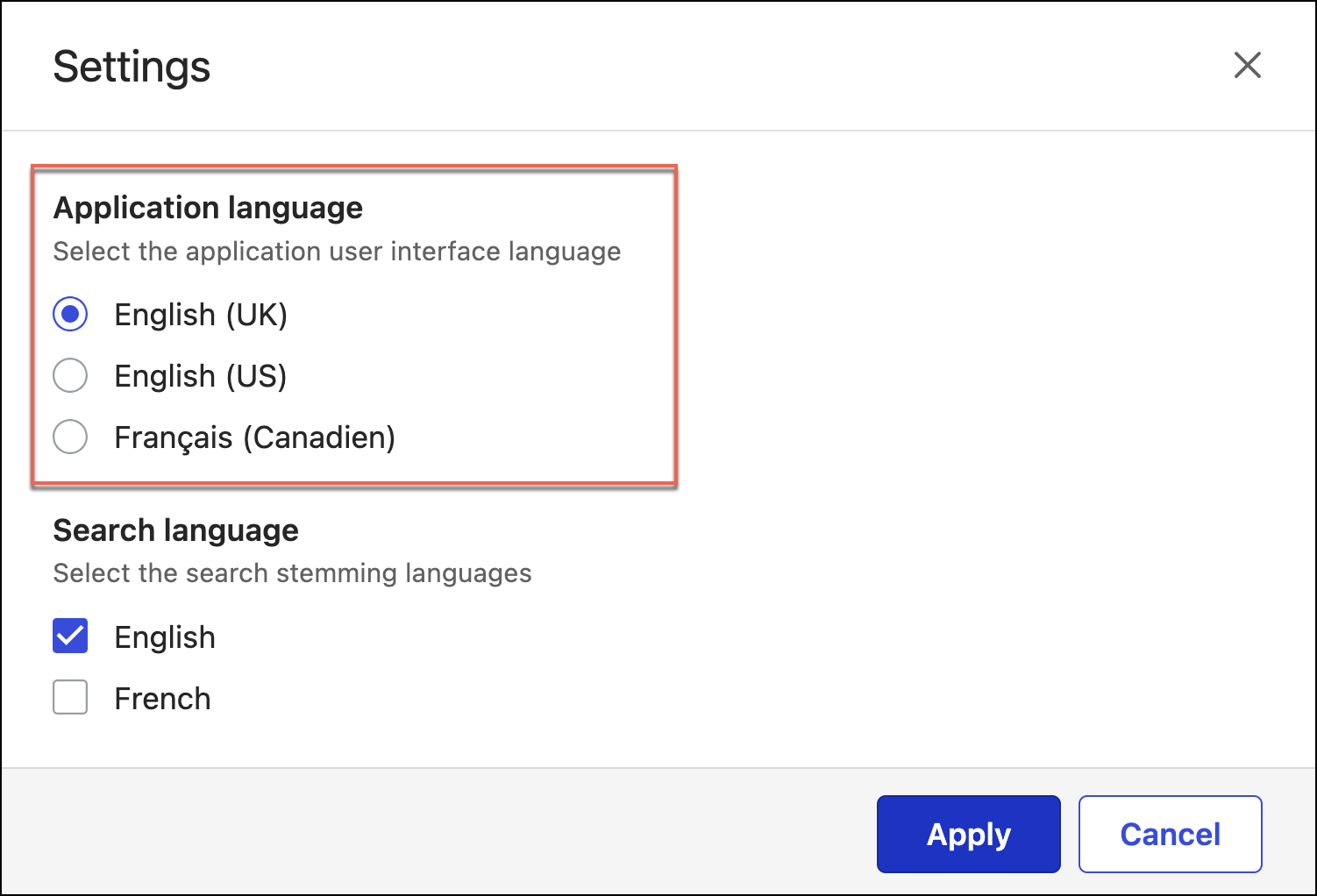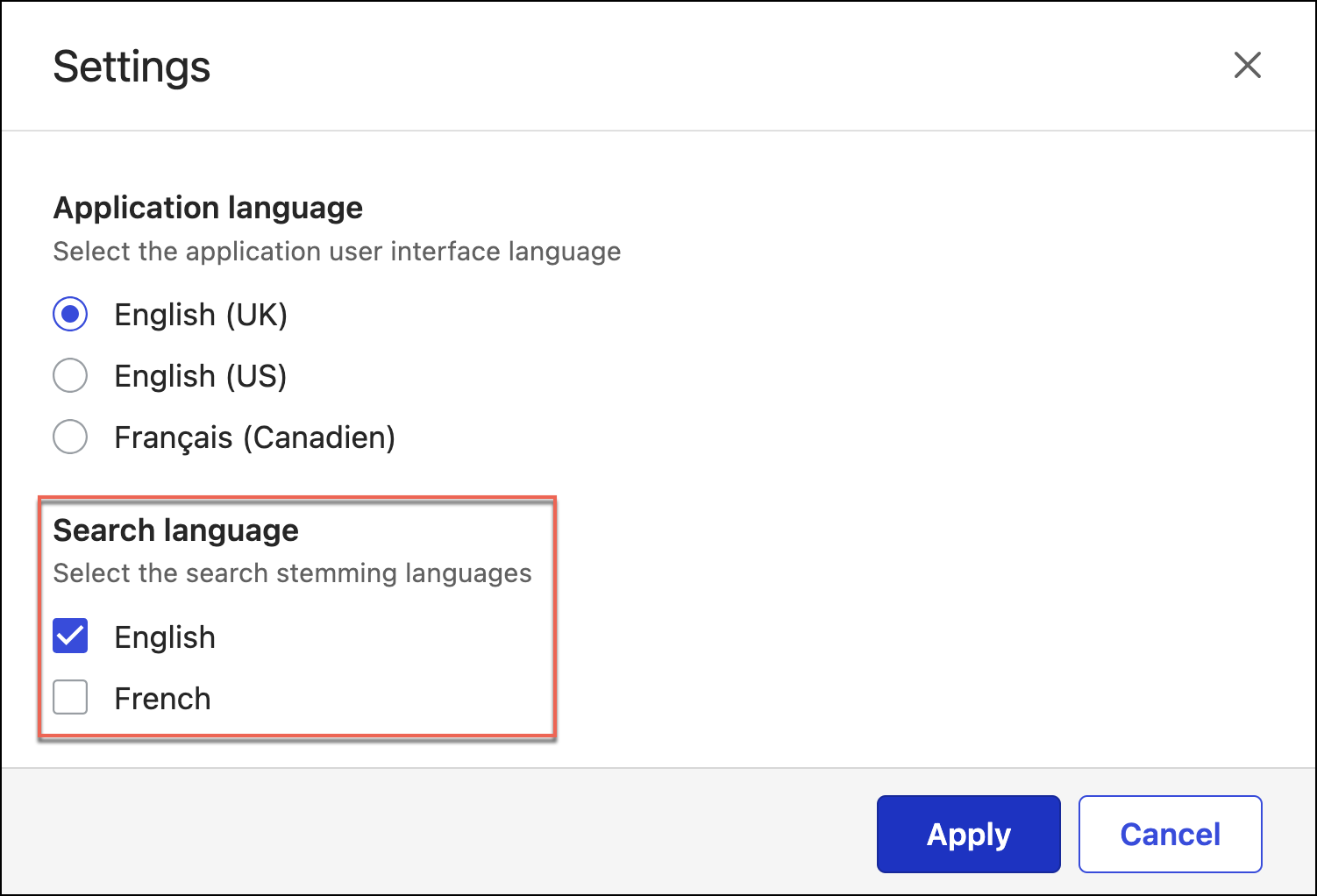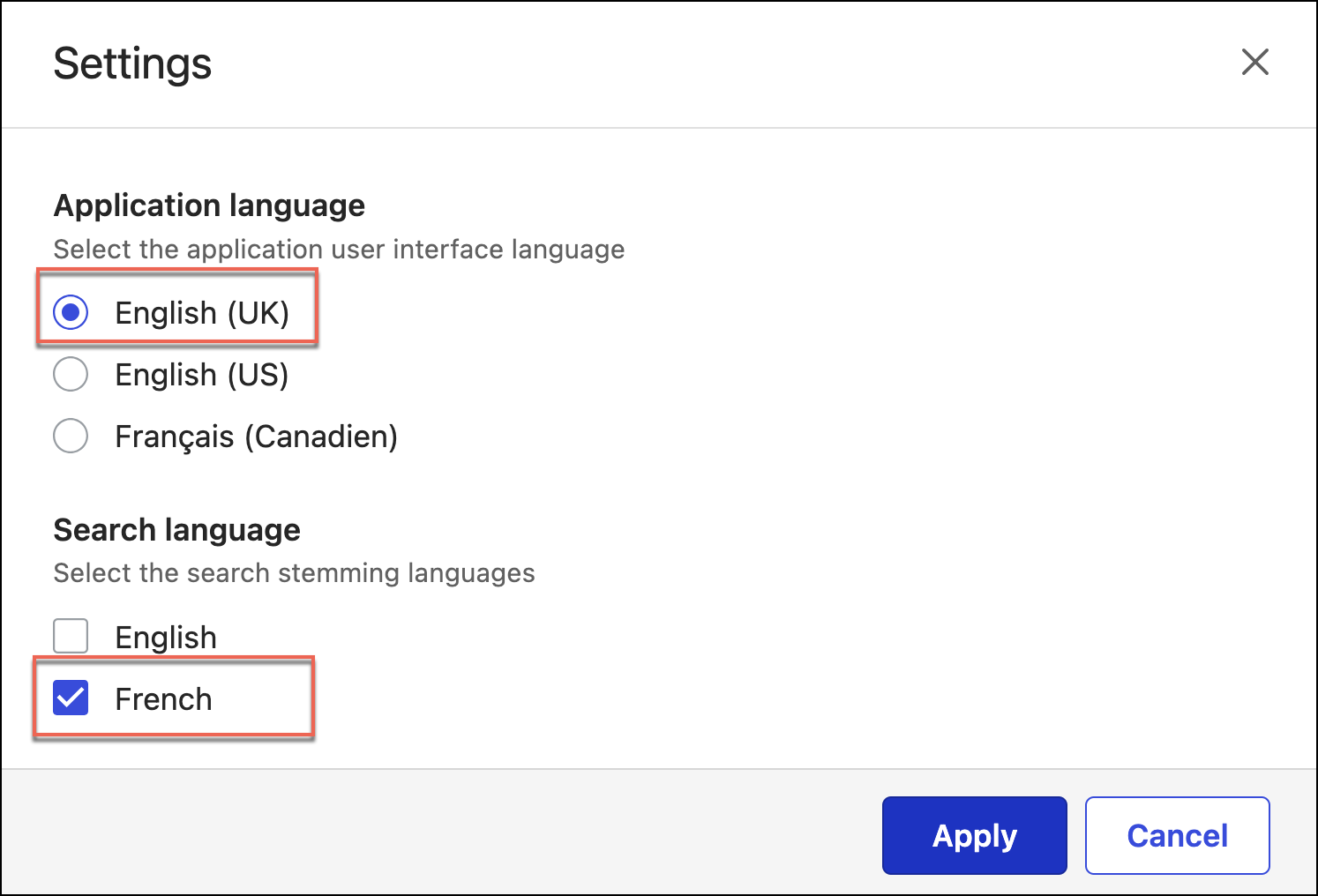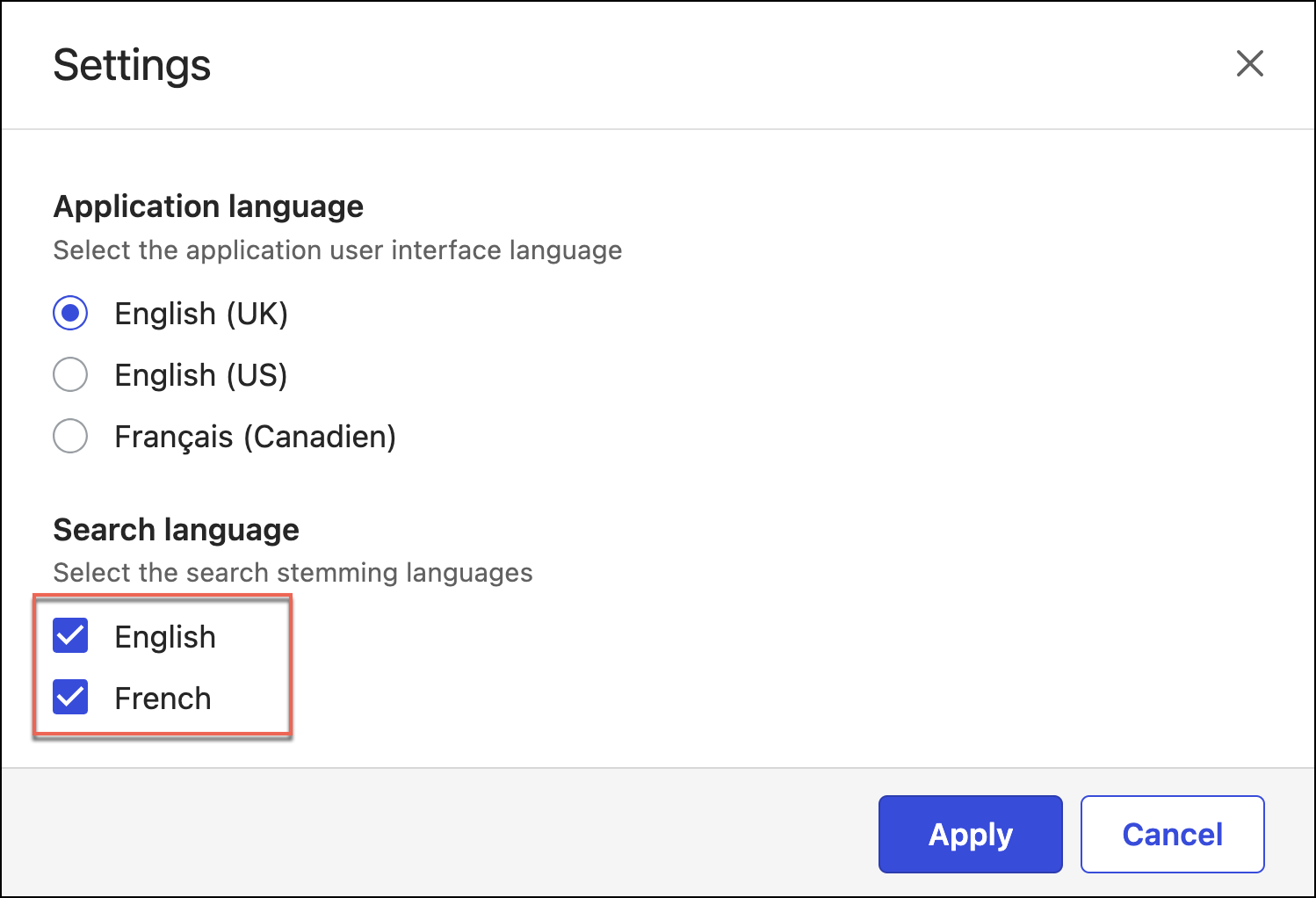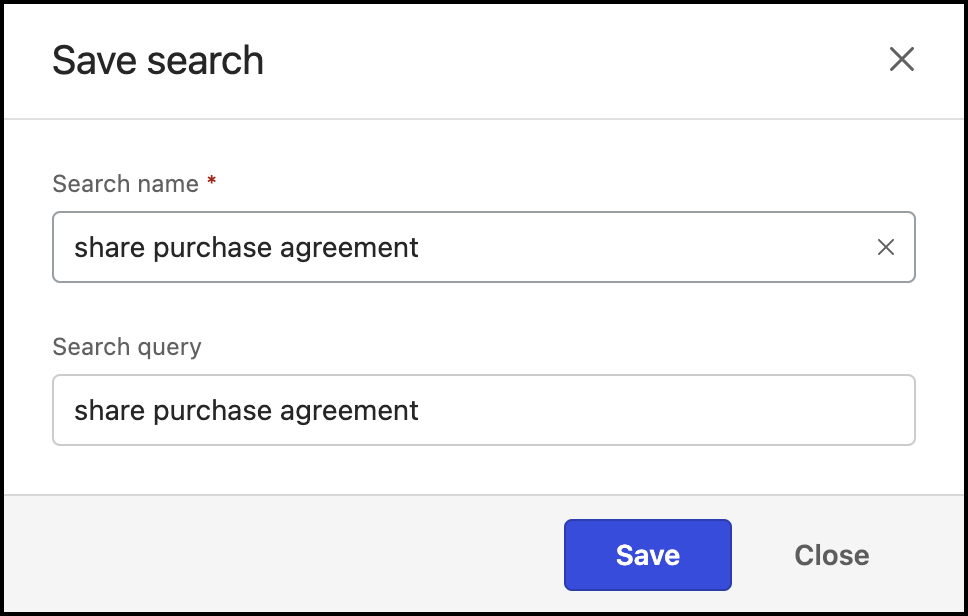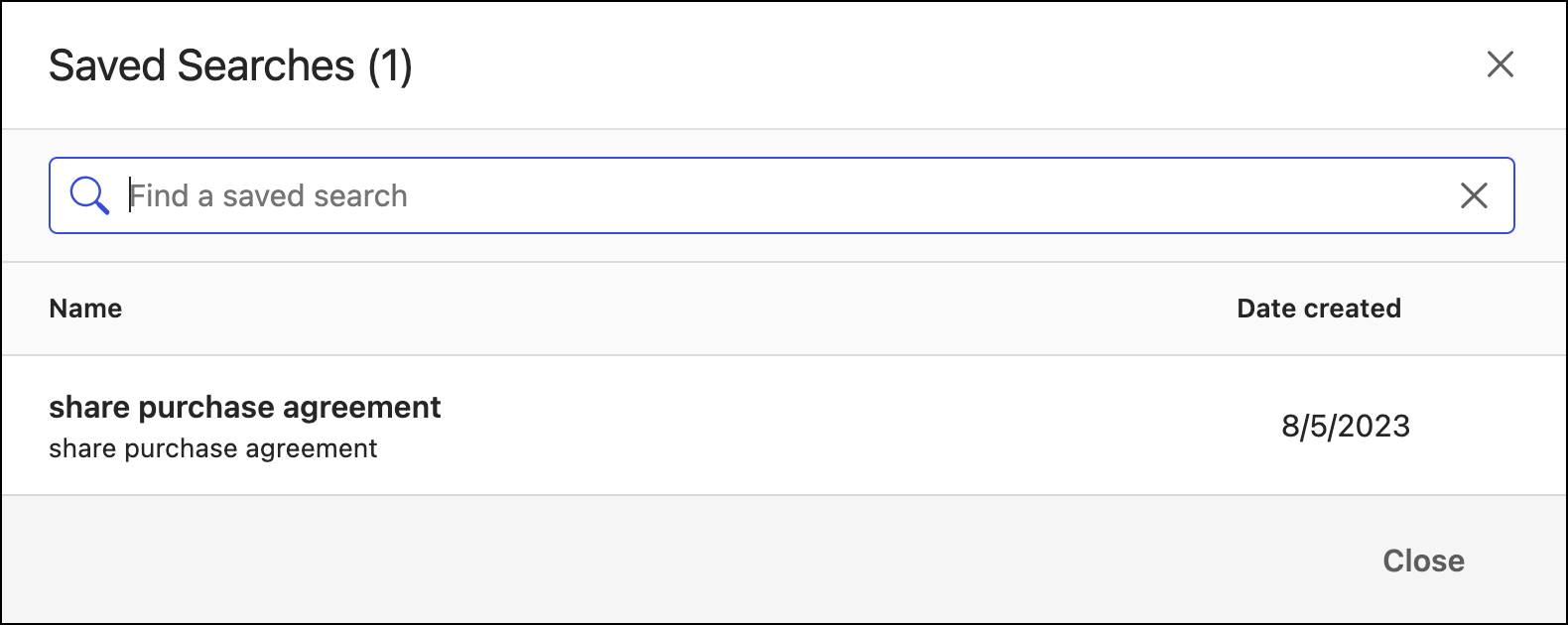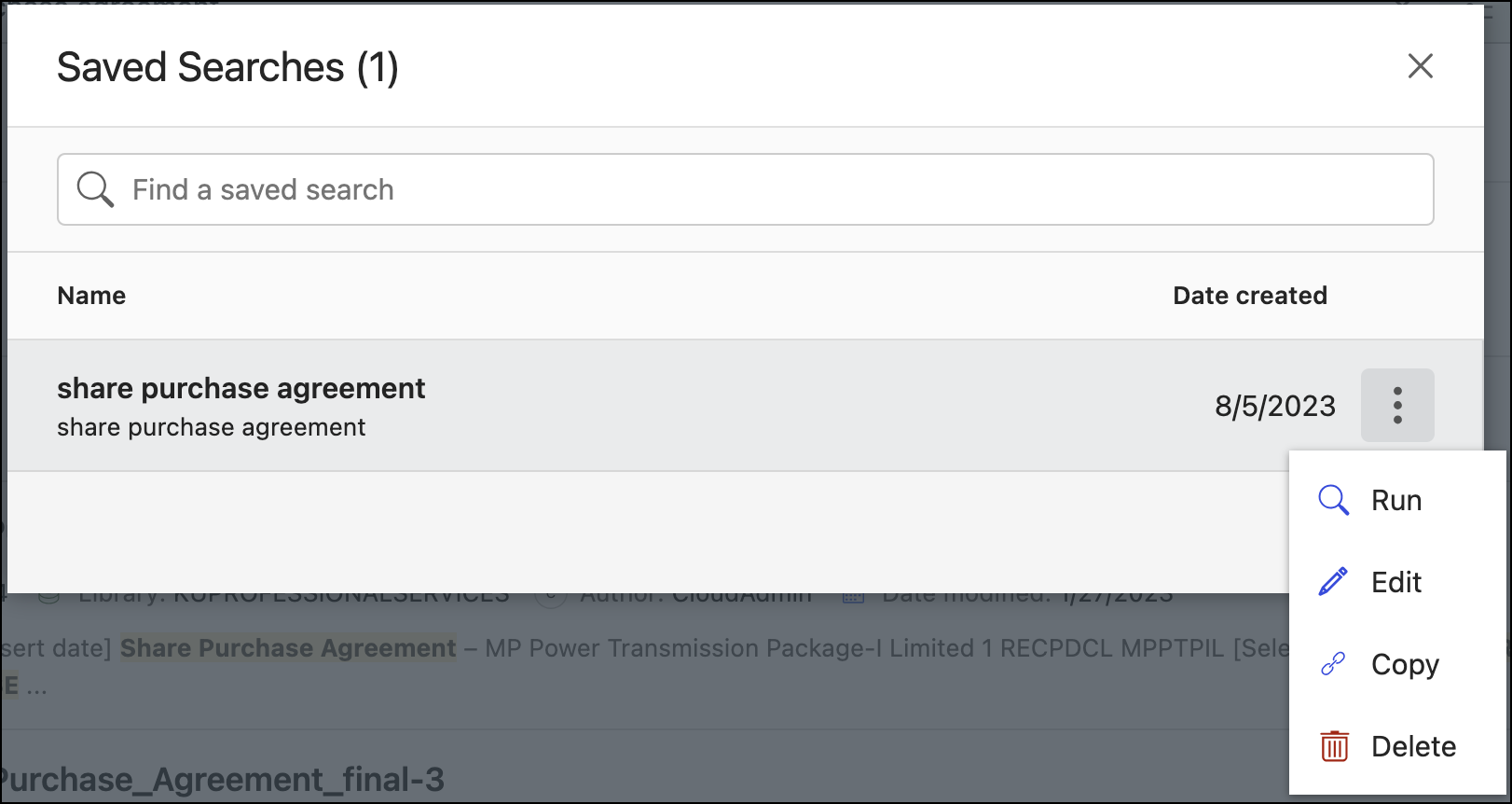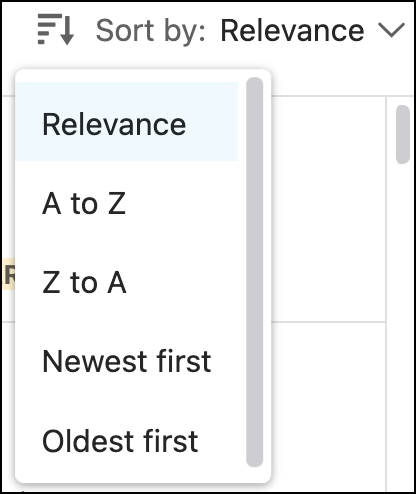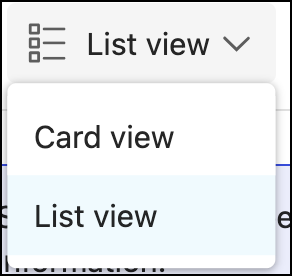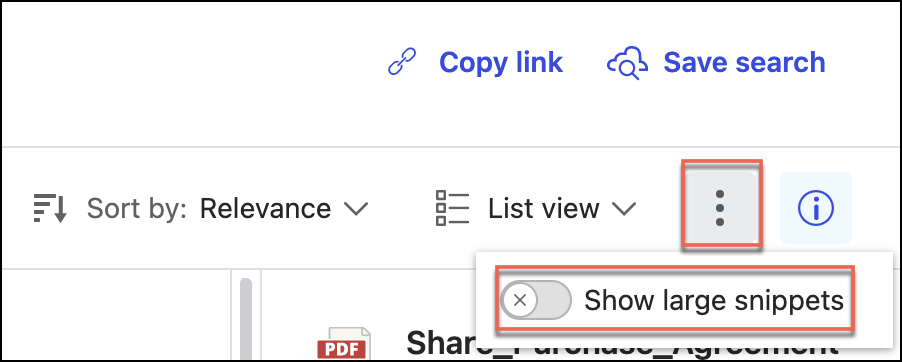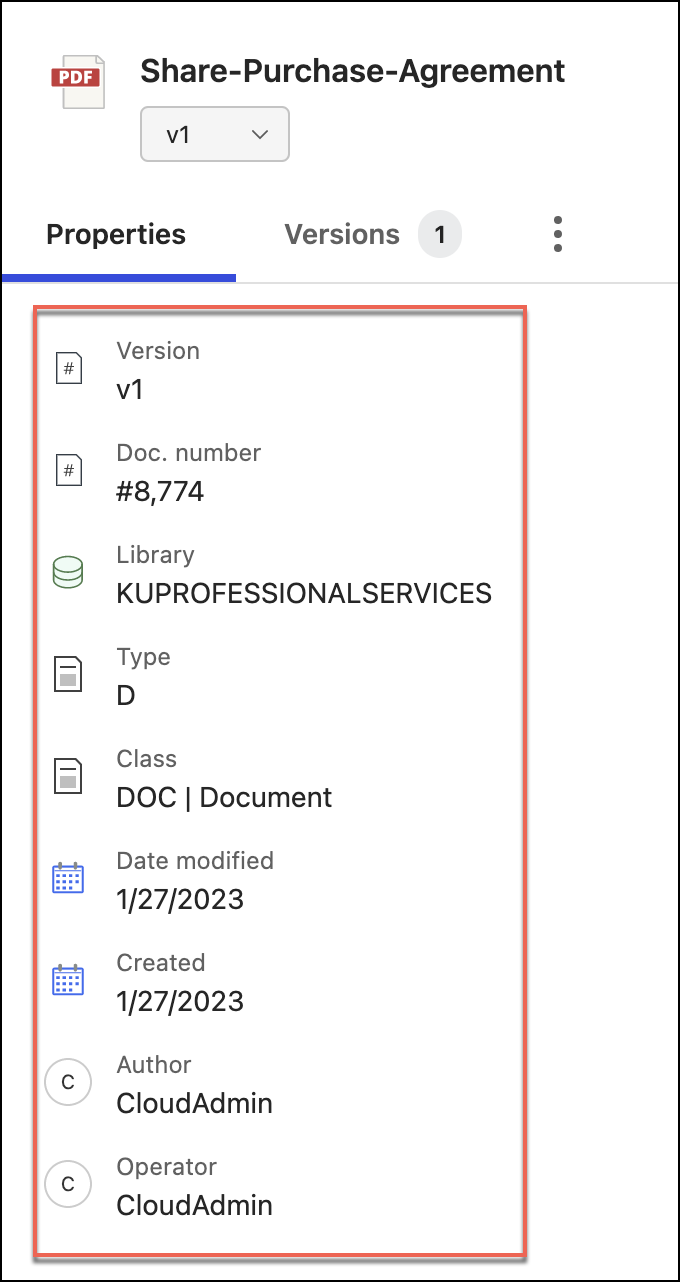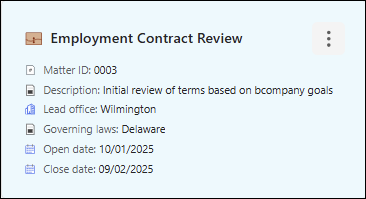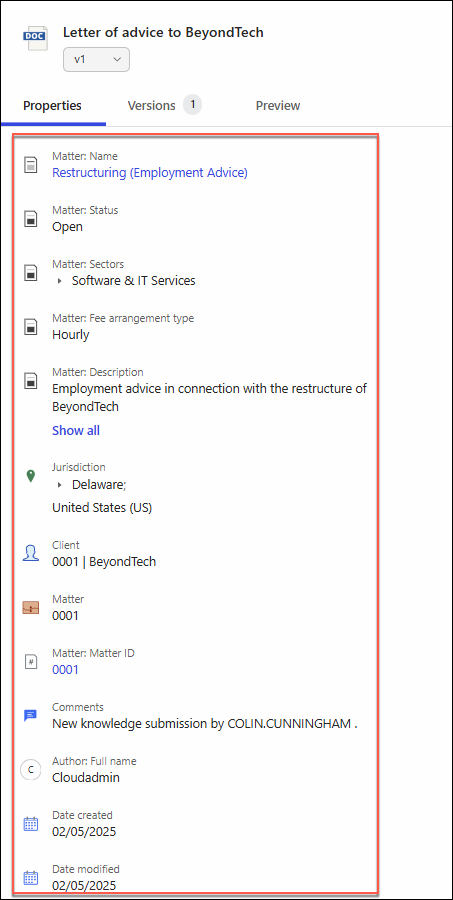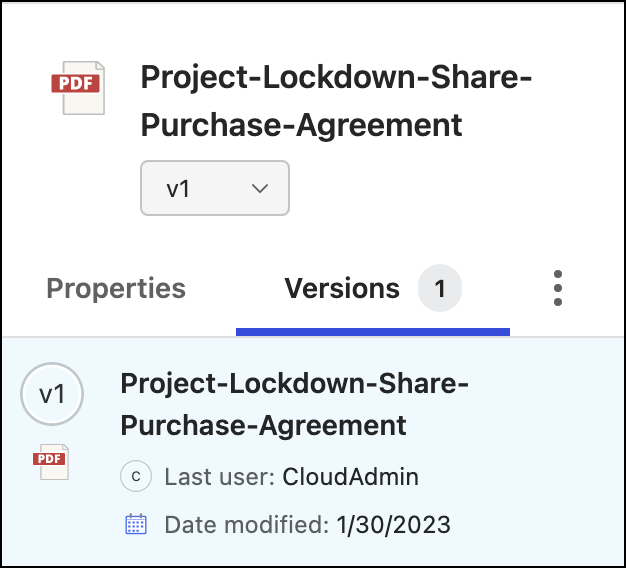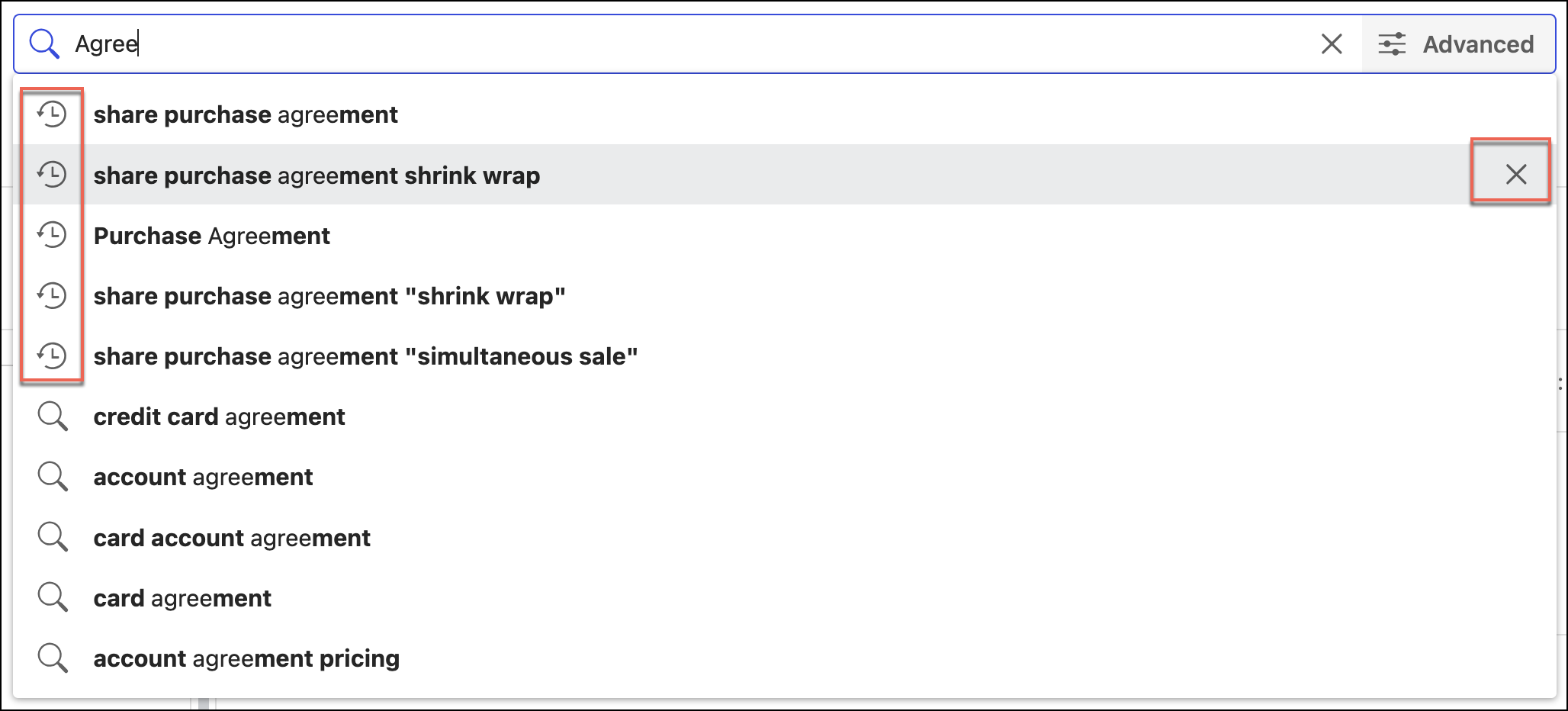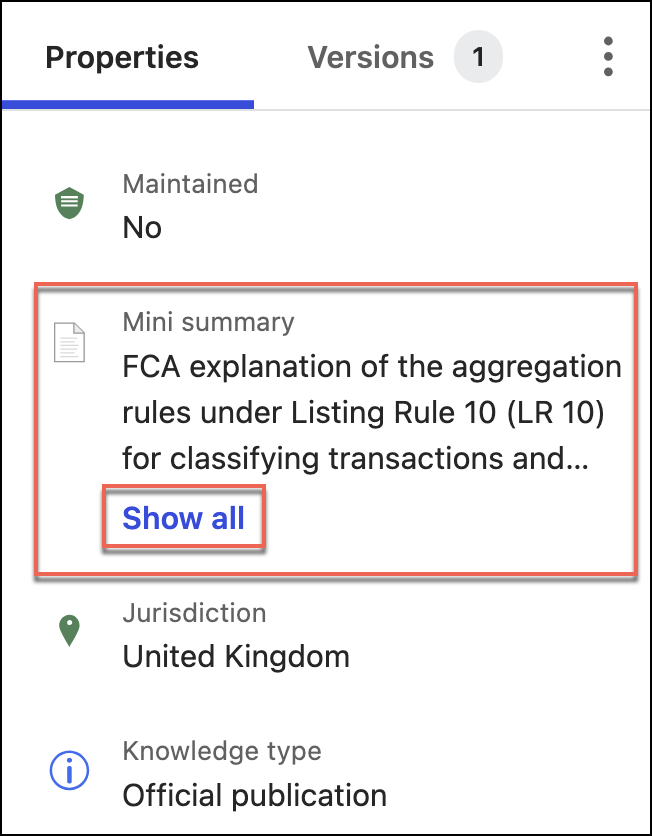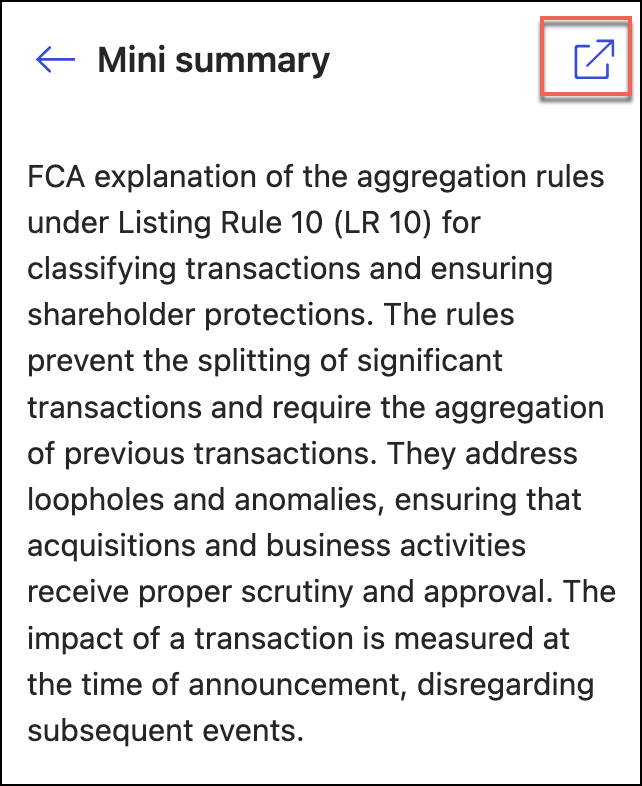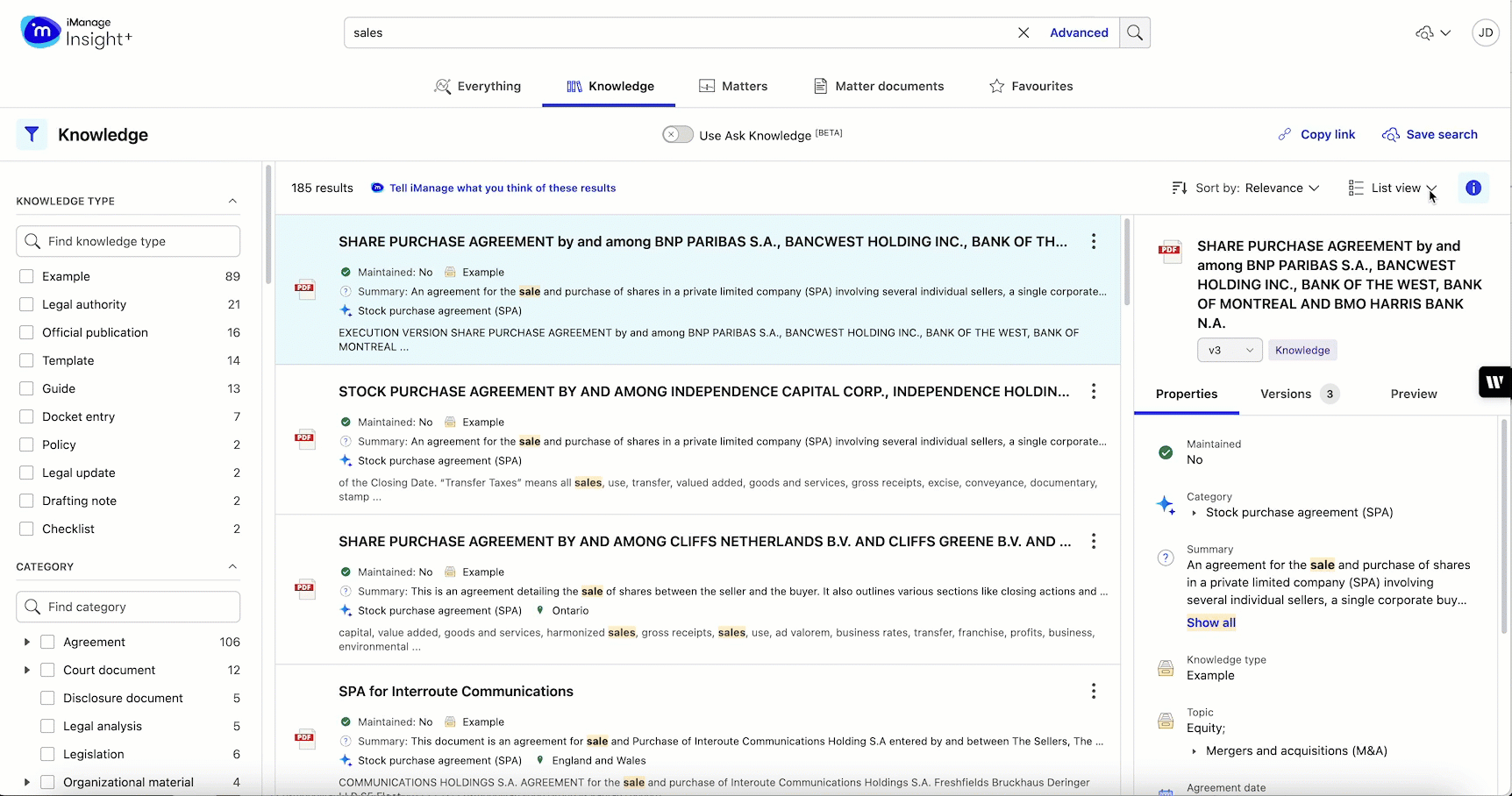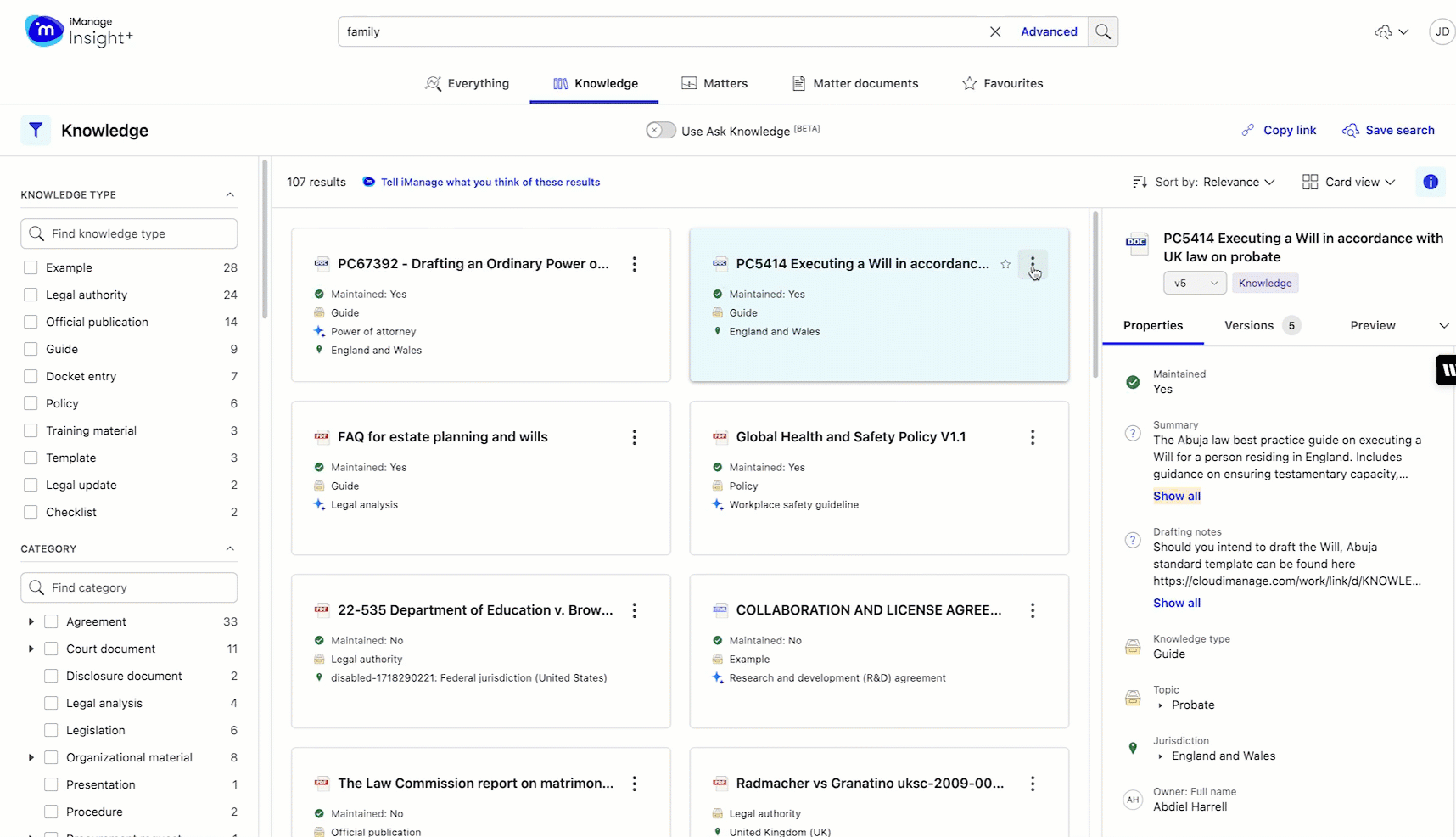This page covers instructions related to the following tasks and functionality:
- Modifying the user interface language
- Modifying the search query language
- Saving a search query
- Retrieving a saved search
- Managing saved searches
- Copying a search query link
- Sorting search results
- Viewing search results
- Hit highlighting
- Viewing large snippets
- Viewing document properties
- Viewing Matter properties
- Viewing document versions
- Deleting recent searches
- Viewing full content in large text fields in Properties panel
- Copying Knowledge documents to an active library
Modifying the user interface language
The iManage Insight+ user interface can now be modified to display in different languages. It currently supports English (UK), English (US), and French (Canadian) with support for more display languages in future releases. As part of this enhancement, all the non-customizable text (that is, anything that can’t be changed by an Admin) in the iManage Insight+ user interface is now viewable in any of the supported languages on selecting the language option.
The option is available on the user profile drop-down menu under Settings > Application Language.
The default language to which the application is set is English (UK).
Modifying the search query language
You can now search in different languages. iManage Insight+ supports searches in English and French with support for more search languages expected in future releases. This functionality makes searches more accurate and relevant by applying language-specific rules.
The system detects your locale and sets the default search language accordingly (if it's a supported language). If the locale isn't supported, the default search language is English. You can override the default, or select multiple search languages.
The selection is available through the new Settings option in the user profile menu under Settings > Search language.
NOTE: The Application language setting doesn't affect the search language setting.
You can select more than one search language.
Saving a search query
You can save the search query for easy retrieval. This saves time when you want to view the same search results later. The Save search link is visible only after you enter a search query and the search results are displayed.
Select Save search. The Save search dialog opens.
Figure: Save search dialogIn Search name, you may enter a more user-friendly name for the search query that'll be easy for your reference.
Select Save. The query is saved.
Retrieving a saved search
You can view the list of all your saved queries using the cloud icon () in the upper-right corner of the page. The cloud icon () appears only if you have at least one search query saved.
Select and from the list of saved searches displayed, select the search query you require. The search results are displayed.
Managing saved searches
You can edit the name of a saved search. Run it to execute the search again. Copy the link to the search and share it with others. Delete a saved search.
Select Manage searches. The Saved Searches dialog box appears. You can view the list of all your saved searches in this dialog box along with the date when the searches were created.
Figure: Saved searches dialog boxIf you have a considerable number of searches saved, then you can use the Find a saved search field in the dialog box to refine the results displayed.
Hover over a saved search. Select the more options icon that appears and select one of the following options:
Figure: Saved search actionsSelect Run to execute the search and retrieve the search results.
Select Edit to rename the search.
Select Copy to copy the search link to be shared with others.
Select Delete to delete the saved search.
Copying a search query link
You can copy a search query from the Copy link option available on the search page. The Copy link option is visible only after you enter a search query and the search results are displayed. Selecting Copy link copies the link to the clipboard. You can then share this link with the concerned person through any of the digital communication channels.
Sorting search results
You can sort the displayed search results. The default display is based on relevance. The other possible sorting options are:
Alphabetical order of the document name (ascending and descending)
Document creation/updation date (ascending and descending)
Your sort preference will be preserved across user sessions. Sort preference is search experience tab specific, which means that you can opt for a different sort order for each of the tabs.
Viewing search results
The search results displayed can be viewed either as a list (List view) or as tiles (Card view). The default view is List view, but you can toggle between the two views alternatively.
Your view preferences will be preserved across user sessions. View preference is search experience tab specific, which means that you can opt for a different view type for each of the tabs.
Hit highlighting
The search phrase that you entered while querying is highlighted in the search results and Preview properties panel to provide you a quick view of the most relevant sentences based on your search. It helps you to quickly decide which results are relevant to you. In addition to the document text, hits found in Comments and Drafting notes are also highlighted.
Viewing large snippets
You can make the hit highlighting feature more effective by enlarging the view of the highlights, that is, the snippet size. This will provide you with more instances of the phrase references in the document.
Select and move the Show large snippets slider to the right to enable the large snippets view in the search results.
Large snippets are available in the List view.
Your snippet view preferences will be preserved across user sessions. Snippet view preference is search experience tab specific, which means that you can opt for a different snippet view for each of the tabs.
Viewing document properties
Document metadata is available in the following two locations:
Search results pane in the document tile:
Figure: Metadata in document tileProperties panel after selecting a document:
Figure: Metadata in Properties panel
Viewing Matter properties
If Insight+ Matter Search has been enabled for your organization, and matter-specific properties have been set, you'll be able to view matter-related document properties as well. When you select the matterID displayed in the Properties panel, it links you directly to the specific Matter Dashboard.
NOTE: To access Matter Search, contact your Insight+ administrator.
Search results pane in the document tile:
Figure: Matter metadata in document tileProperties panel after selecting a Matter document:
Figure: Matter metadata in Properties panel
Viewing document versions
A document can have multiple versions. The Versions tab in Properties panel provides you with the ability to view all the versions available for a document. Selecting a specific version navigates you to the preview page for that version of the document.
Deleting recent searches
When you enter a search, suggestions are shown based on your past searches. We've added an x icon next to each recent search so you can now delete those you no longer wish to see. This way, you won't see deleted searches in the suggestions when you search again.
Viewing full content in large text fields in Properties panel
In the Properties panel, in large text fields, content gets truncated if the number of characters exceeds the defined limit. A Show all button is now included in such cases where the text is truncated.
Selecting the Show all button displays the entire text. The displayed text supports markup and markdown, except for text in CSS and JavaScript.
Selecting the icon in the upper-right corner displays the text in a new tab for ease of reading.
Copying Knowledge documents to an active library
The Copy to Work option lets you copy and save only Knowledge documents to your preferred active library.
The Copy to Work option is available on the right-click context menu, and kebab menu in the List view/Card view, and can also be selected on the Preview page.
NOTE: The Copy to Work option is optimized for files up to 1 MB. It can handle files up to 15 MB, if the operation completes within five seconds. If the process takes longer, then the operation doesn't complete and the following message is displayed:
”Document size exceeds the maximum allowed limit. Download it locally and manually upload it to Work.”
To copy and save a Knowledge document:
For selected Knowledge document, select the kebab menu or context menu, and then select Copy to Work.
In the Copy to Work dialog, select the preferred DOCUMENT FOLDERS.
Select Open.
After the preferred folder opens, select Save to save your Knowledge document.
Alternatively, you can create a New Folder to save your Knowledge document. For more information on how to create a New Folder, refer to Create a New Folder section in iManage Work Help.Figure: Create and save New Folder, and view Knowledge document in Work

